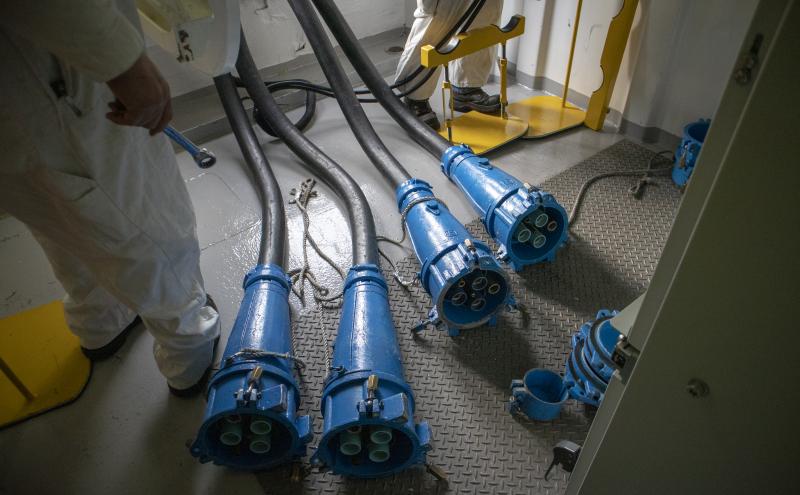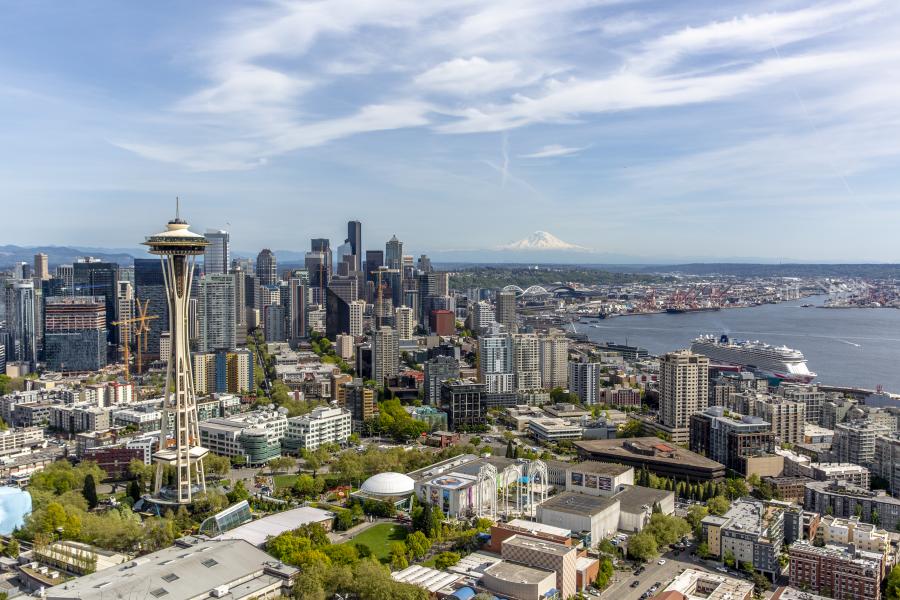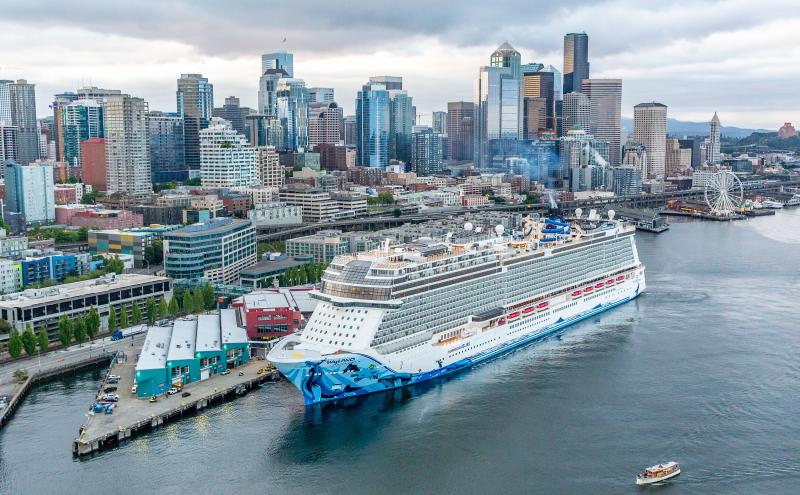
Toward the Greenest Cruise Port in North America
The Port of Seattle is on its way to becoming the greenest port in North America, with a goal to phase out seaport-related emissions by 2050. The cruise industry is a significant economic driver in the region, contributing 5,500 jobs and around $900 million each year in local business revenue. As the cruise industry grows locally, the Port recognizes its responsibility and the importance of balancing economic growth with sustainability.
Eliminating at-berth emissions by switching a ship’s engines to using clean electricity is a major strategy for phasing out air emissions. Each time a cruise ship docks in Seattle, it takes an average of 10 hours to offload guests and their luggage, load provisions, welcome new guests, and prepare for its next departure. While ships are at berth, they still need energy to run lights, chill food, operate equipment, and power a myriad of other onboard services. A shore power connection allows cruise ships to plug into cleaner, landside electrical power and turn off diesel engines while at berth. As a result, each cruise ship that plugs in can reduce diesel emissions by 80% and CO2 emissions by 66% on average.
The Port of Seattle has two shore power connected berths at the Smith Cove Cruise Terminal at Pier 91. Additionally, a project to expand shore power to the Pier 66 cruise berth is expected to be completed and online during the 2024 cruise season. After summer of 2024, all cruise berths operated by the Port of Seattle will have shore power connections.
Today, agreements that allow cruise ships to berth at Port of Seattle terminals require shore power capable ships to use shore power when a connection is available. The Port has also set a goal to have 100% of home port cruise ships in Seattle connected on every call by 2030 or sooner.
2023 Shore Power Highlights
- 35% of sailings plugged into shore power (102 of 290)
- Shore power avoided 2,700 metric tons of GHG and 0.75 metric tons diesel particulate matter
- In 2023, 70% of calls at Pier 66 were equipped with shore power. Once complete, shore power at Pier 66 is expected eliminate an estimated additional 3,000 metric tons of CO2 when home port ships connect to landside electrical power.
2024 Cruise Season Preview
- 276 cruise ship calls
- 66% (182/276) cruise ship calls equipped to plug into shore power
- Pier 66 shore power project completing by mid-summer, making shore power available 3 of 3 Port of Seattle cruise berths
Partnering with the Cruise Industry to Phase Out Air Pollution and Address Climate Change
Century Agenda Greenhouse Gas Reduction Targets
Port Controlled: 50% reduction by 2030 (from 2005), net zero or better by 2040
Port Influenced: 50% reduction by 2030 (from 2007), carbon neutral or better 2050
2020 Northwest Ports Clean Air Strategy Commitments
VISION: Phase out emissions from seaport-related activities by 2050, supporting cleaner air for our local communities and fulfilling our responsibility to help limit global temperature rise to 1.5 degrees Celsius.
OBJECTIVES: By 2030, install shore power to all major cruise and container berths
Cruise is a Key Regional Industry
Seattle’s cruise industry is a major economic driver for the region, providing:
- Over 5,500 jobs
- Over $900 million into the region’s economy each season
- Each home port ship call contributes $4.2 million to the state’s economy every time it docks
- The average cruise party of 3.4 people spends $660 in Seattle during their cruise visit, boosting local businesses



